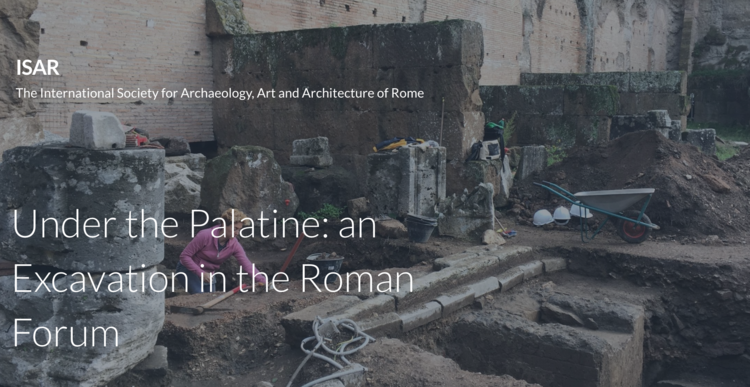


ROME -- "Come along and see what we did this summer," said old acquaintance Tom Rankin. "Our cultural heritage team has been working on a portion of the Palatine Hill." Rankin, Rome-based American architect with a master's from Harvard, teaches at the prestigious University "La Sapienza" and at two American universities with programs here. By "working on" the Palatine he meant excavating and sifting through 2,000 or so years of Roman Forum history under the auspices of the International Society for the Art, Architecture and Archaeology of Rome (ISAR), of which he is a co-founder, see >> [2]
ISAR calls Rome "an ideal laboratory for the sustainable cultural heritage." The organization's focus is to promote sustainability of that heritage through excavations, surveying, archiving and conservation of cultural sites and their artifacts. In addition to its work in the Roman Forum, its projects have involved analysis and assessment of vulnerability and the risk to heritage sites under the guidance of veteran Italian archaeologist Dora Cirone. Another ISAR mainstay is Alessio De Cristofaro, whose chief interests include preventive archaeology, the topography of ancient Rome, and Roman and Etruscan archaeology. Marzia Di Mento is a classical archaeologist specialized in social museology. Among other places she has worked in the Jewish catacombs of Rome and the synagogue of Ostia Antica.
The ISAR project at the northwest end of the Horrea Agrippiana has now completed its first full season. The goal is to document the traces of ancient human settlement between the Palatine Hill and the Tiber River. This summer's dig was at the base of a steep section of the Palatine that had literally crumbled but was originally swampy. As the ISAR team has pointed out, despite its association with Romulus and Remus, the area is particularly ancient and has yet to be thoroughly investigated. "It has been largely unknown," said Rankin.
Already, however, during a previous excavation of the area at the bottom of the Palatine Hill traces had been found of cabins dating from the 7th century BCE, or to the time of Romulus and Remus, legendary founders of Rome on April 21 of 753 BCE, according to Livy. "That original village extended to here," said Dora Cirone, veteran archaeologist with 30 years experience of work and study in the Roman Forum. Vestiges of the subsequent 6th century BCE Etruscan village, built in the same place, have also been uncovered, despite the fact that 19th century archaeologists actually damaged some of those early structures (!)
Another important find was an enormous 2d century BCE domus that was several stories tall, with terraces jutting from the hillside, and with fragments of a mosaic floor. It was constructed atop remnants of far older buildings. In this many-layered area the team also excavated tombs in which the bodies were covered with typically ancient roman large flat rooftiles of terra cotta. Fascinating for the archeologists specialized in brickmarks, a number of these tiles showed the brickmarks that permitted the tomb to be dated; one, a child's tomb, showed a brickmark from the 6th Century AD while others were dated to the 7th and 8th Centuries AD.
The project is made possible by concession from the Special Superintendency for the Colosseum, the National Roman Museum and the Archaeological Area of Rome. Crowd-funding helps make the dig possible, and donations are most welcome. The area is not accessible to visitors, but a contribution of at least E 50 includes an invitation to visit the dig site. Generous patrons will enjoy VIP treatment. For how to donate, see >> [3]
And to see videos of the team at work, go to >> [4]
Source URL: http://newsite.iitaly.org/magazine/focus/art-culture/article/summering-it-in-forum-isar-and-sustainable-archeology
Links
[1] http://newsite.iitaly.org/files/underthepalatinepng
[2] http://www.isarome.org/
[3] http://isarome.org/donate/
[4] http://isarome.org/projects/signum-vortumni-excavation-in-romes-archaeological-park/